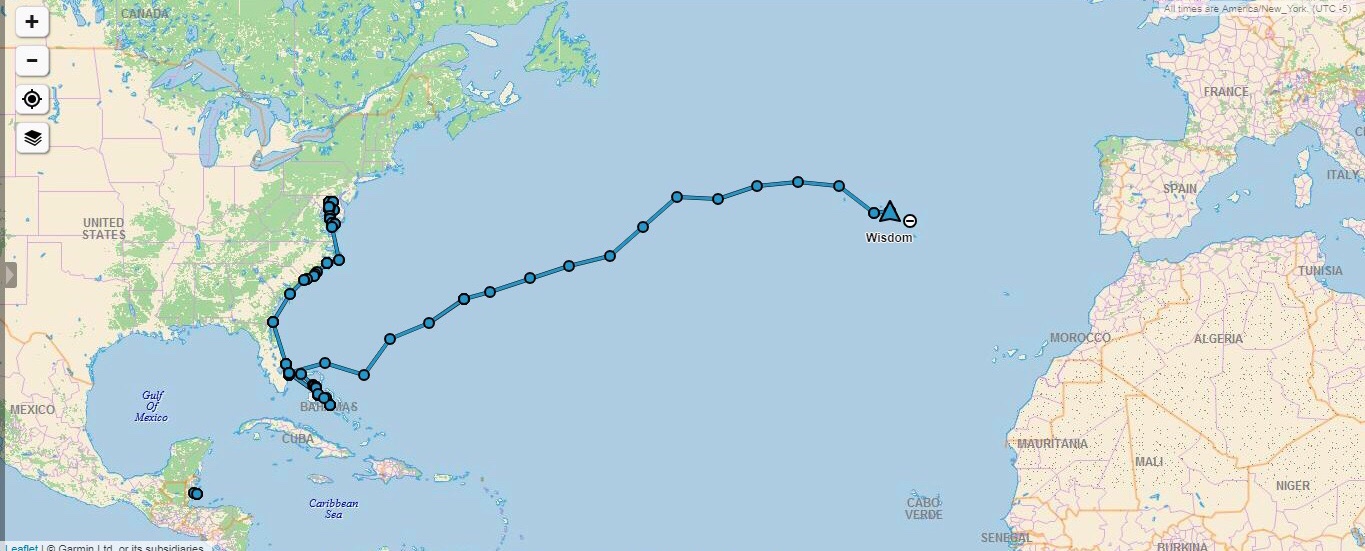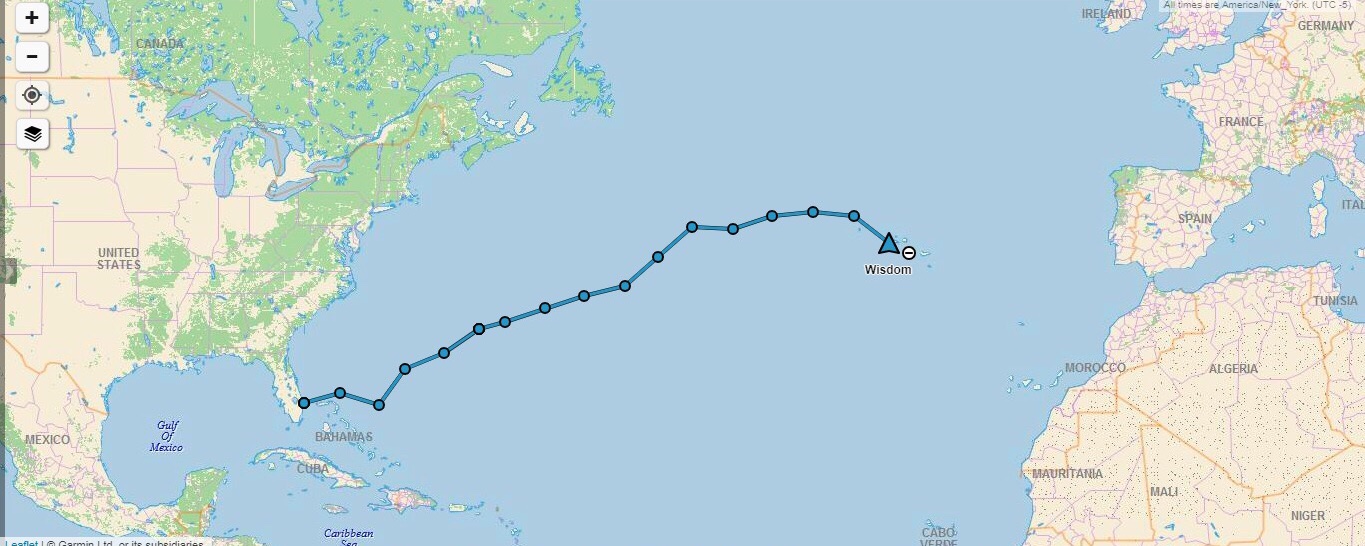When we left Baltimore in the Summer of 2017, we thought we would be in the Azores by Chrismas 2017. Well, we made it, but with a lot more time and distance in getting there!
We honestly were not ready yet to cross an ocean when we first set sail. Looking at this map, you can see that when we decided to head to the Bahamas to ride out the winter and made our way south, we clung to the coastline!
We were planning to cross an ocean and at many points felt like we were far from land, but the truth is, we were smack up against the coast the whole time.
By the time we made it to the Bahamas, we had gotten the experience we needed to feel confident and comfortable with heading out to sea to actually cross an ocean. No longer did we watch shore disappear behind our stern, no longer did we worry about getting far from land.
When we left Florida for the Azores, we were ready. Nothing had physically changed with us, but a mental transformation had taken place. We still had the same gear and the same thought processes about when to use certain sails, but our attitude about everything had changed drastically. Now, we were heading out to sea and the thought of land sickened us. We wanted to head straight away from land out into the blue horizon where we would point directly towards our next destination.
The trip began at the wrong time, for the wrong reason, and in the wrong direction.
We left Florida when the weather was not right to cross the ocean because the summer weather patterns that grant you safe passage had not occurred yet. We should have waited another two weeks for the weather to be correct.
We left to appease our angry crew member because we were worried that he would abandon us and we thought that we really needed a crew member to cross an ocean, so we left port to appease him and shanghai him (there are no airports out in the middle of the ocean) so he couldn’t abandon us.
To try and make our way from land, but avoid the nasty storms up north, we traveled way to far east. This placed us into the doldrums with no Gulf Stream to help carry us through the windless region.
We learned some very valuable lessons on this passage.
First: Don’t have crew.
Second: If you have crew, you don’t have to please them, they have to please you.
Third: You call the shots, not the other way around.
We stopped in Bermuda to drop off our angry crew member because we realized that we didn’t need crew (or his giant ego and bad attitude) to make the crossing.
This passage was insanely slow and was full of mistakes that we learned from and would not repeat!
Maddie and I waited in Bermuda, in St. George’s Harbor, for the winds to be perfect for us to leave. While we waited, we had a grand time exploring Bermuda and getting to know the locals. Once the winds were correct, we left and had a wonderful and fast passage to the Azores.
We stopped listening to the weather forecasts on the way to Bermuda because they were always wrong. We instead looked at the clouds to read what is really going on up in the sky. Using this method, we were able to sail on the rhumb line straight to the Azores, until we got caught in a high pressure system for a few days and were totally becalmed.
Being becalmed for a few days was the worst weather we had. While crossing, we had gales to the North, Hurricane Chris to the West, and trade winds all around us, but by looking at the sky, we were able to keep ourselves safe from powerful winds and simply relax in light winds.
The crossing was very surreal, we saw things that could never be imagined, like one night where photosensitive bio-luminescent creatures illuminated the ocean with as many lights as the stars above in the sky. On another occasion when the ocean calmed down completely, the entire surface was covered in a snow of micro plastics.
Now that we have made our first ocean crossing, we feel very confident that we can do it over and over again as we voyage the world and visit ports all around the Atlantic Ocean.







